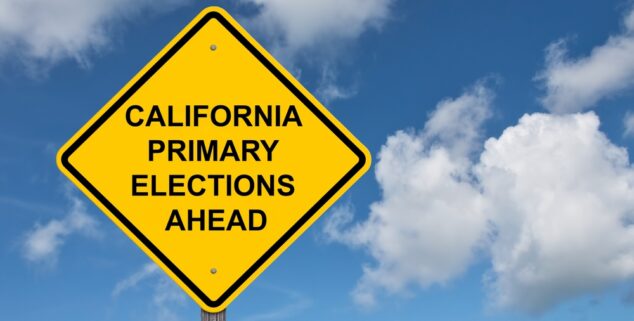Opinion
Time to end the top two primary
 Image by Jim Vallee
Image by Jim ValleeOPINION – There will be another primary election on Tuesday, and the result will be another indictment of this state’s failed top-two primary experiment.
Voter turnout will be abysmal, there will likely be a quirky result somewhere in which the party that holds a plurality of voters in a given political district will not advance a candidate to the general election, and the biggest question to be answered will be whether reverse psychology has again proven to be an effective campaign strategy.
This nation has seen some attacks on its democracy over the last several years. With the top-two primary, California is doing its part.
With the outcome of the presidential primaries having long been a foregone conclusion, the biggest news story of this California election cycle has been the barrage of TV advertising that Democratic U.S. Senate front-runner Adam Schiff has purchased to flag former Los Angeles Dodger ballplayer Steve Garvey as the scariest Republican on the ballot.
By spending millions to tell voters that Garvey twice voted for Donald Trump and that he’s “too conservative” for California, Schiff is using reverse psychology to tell conservatives and Trump supporters that Garvey is their man. If enough of them get that message, Garvey may get enough votes to surpass the other two Democrats on the ballot, Reps. Katie Porter and Barbara Lee. (After condemning the tactic, Porter deployed it herself in hopes of lifting up another GOP contender so she could snare the second spot).
It’s the same tactic that Gov. Gavin Newsom employed in his first campaign for governor, successfully promoting a weak Republican challenger. Both realized that, in a state in which registered Democrats outnumber registered Republicans by nearly 2-to-1, they’d rather not run against another Democrat in the fall.
If Garvey doesn’t advance, Republican voters in California – and there are 5.3 million of them – will not be able to vote in November for a Senate candidate who even remotely reflects their political values. That’s what this screwball top-two system produced in the 2016 and 2018 U.S. Senate races. How’s that for democracy?
On a smaller scale, that scenario has played out somewhere in the state in every top-two primary. The most recent example, in 2022, was in one of the most Republican state Senate districts in California. Five GOP candidates combined to collect more than 57 percent of the primary vote, but none got quite enough to best either of the two Democrats on the ballot.
A few such quirky results might be acceptable if the promises of the top-two primary proponents had actually come to pass. When they were selling this scheme to voters back in 2012, they claimed their system would “open up primary elections” and “give independent voters an equal voice.”
Well, one analysis shows that before the top-two came along, the participation of independent voters in primaries lagged 17 percentage points behind that of partisan voters. That gap still persists – and, at 18 percentage points, is actually slightly larger.
Voter turnout in primaries has also been unchanged. In 2010, the last gubernatorial election under the old system, turnout was 33.3 percent. In the 2022 gubernatorial election, it was 33.2 percent.
Proponents also promised that their system would result in elected representatives who are “less partisan.” Twelve years later, does anybody really believe that has happened?
There was once a system – and California briefly employed it – that empowered all voters to choose from among all candidates in the primary but still awarded all political parties a spot on the November ballot. But the U.S. Supreme Court shut that one down.
The top-two alternative has proven to be a ridiculous substitute. It’s time we go back to a system in which we let voters from all parties — Democrats, Republicans, Libertarians, Greens – select a candidate in primary elections and then let a battle of contrasting political ideas play out in the fall.
If we want to protect democracy in California, that would seem a good place to start.
Steven Maviglio is President of Forza Communications, a Sacramento-based Democratic political strategy firm. He served as spokesman for former Gov. Gray Davis and three speakers of the California Assembly.
Want to see more stories like this? Sign up for The Roundup, the free daily newsletter about California politics from the editors of Capitol Weekly. Stay up to date on the news you need to know.
Sign up below, then look for a confirmation email in your inbox.

Leave a Reply